Hasegawa's 1/32 Graf's 190A-5 "Special"
By Ken Matras
Hermann Graf's Fw 190A-5 "Special"
Model by Ken Matras
Article and Photos by Mark Proulx
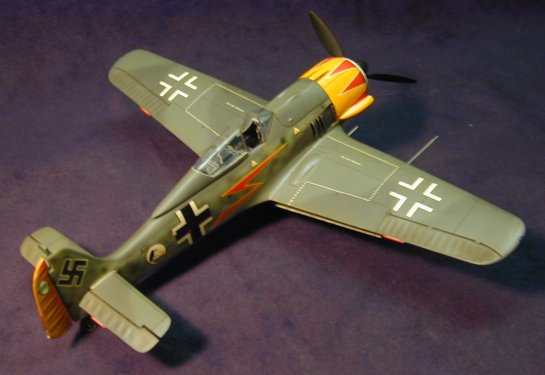
This model of Hermann Graf 190A-5 "Special" was constructed by Ken Matras. It is a highly modified version of Hasegawa's 1/32nd scale Fw 190A-6. Many of you are already aware of the Hasegawa kit so I won't go into too much kit detail other than to say that the model has raised surface detail and inaccurate wheel wells.
Ken had to incorporate a number of details into this model to reflect its Fw 190A-5" Special" lineage. The most obvious change visible to the modeler is the modified supercharger intakes that were found on Graf's aircraft.
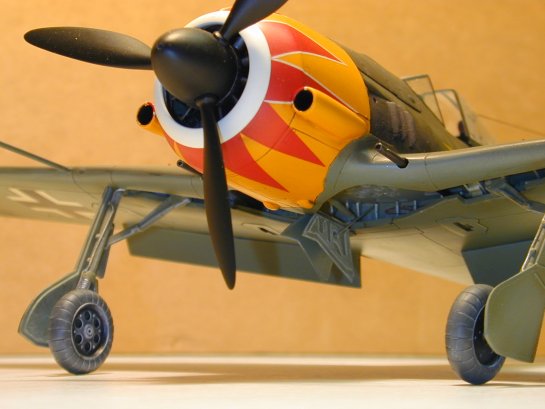
The first task that Ken undertook on his kit was to scribe all the raised panel lines. This enabled him to use the raised surface detail as a guide. After this was completed, all the remaining surface detail was sanded off. The rudder was removed from the fuselage to be added later at an offset angle.
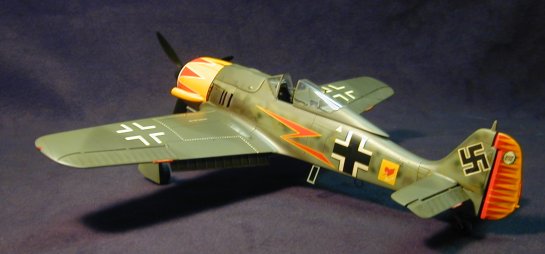
Construction then moved to the cockpit. This area was completed out of the box. The only modifications Ken added were the addition of seat belts made from paper and Waldron buckles. The interior was then painted RLM 66 and various knobs and switches were then painted. Dry brushing with silver then highlighted the raised surface detail.
The next item Ken had to modify, was the supercharger intakes that were particular to Graf's aircraft. The intakes were made from evergreen tubing and putty. The new units were installed on the forward fuselage after removing the characteristic Fw 190A-6 bulges found on the Hasegawa kit. The fuselage was then completed straight out of the box
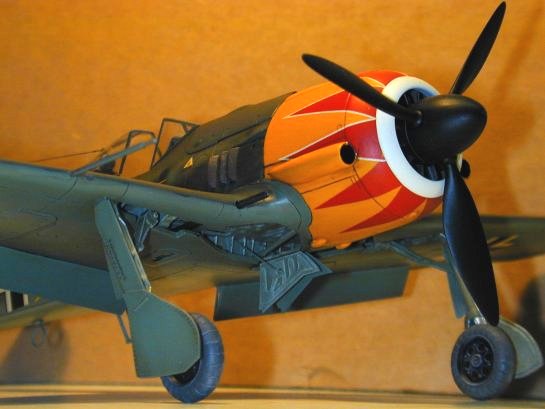
Ken's next significant changes were made to the wings. The kits wheel wells were completely erroneous and new items needed to be scratchbuilt. This was accomplished by removing the wheel wells from the model. New items were then made from plastic card and Plastruct. Fine wire was used to show the various lines that ran through the wheel wells. The kits landing gear was then constructed using wire for the brake lines. Graf's aircraft was also equipped with inner gear doors. As these items were not found in the model, new items were made from sheet plastic. The wheel wells, landing gear struts and inner gear doors were then painted RLM 02. After these modifications, the flaps received some detailing. Ribs were made from evergreen strips and added to the inner surface of the flaps and underside of the wing. These areas were then painted RLM 02 after assembly. A silver dry brushing was then applied to highlight the details. The new flap assemblies would be added to the model in a lowered position. Tubing was used for the cannon barrels and were added after the painting sequence.
The last item that needed to be modified from the Hasegawa kit was the elevators. Ken removed these items (from the) horizontal tail to be added later in the drooped position.
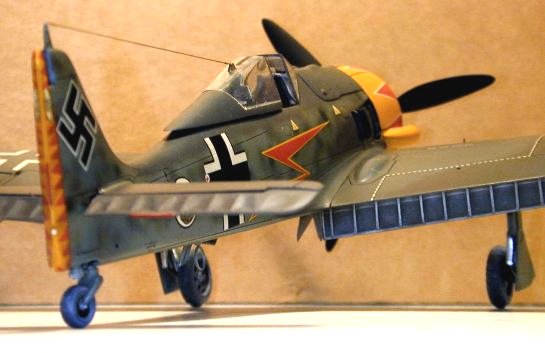
The model was now sprayed using Humbrol paints. First the yellow areas of the nose and rudder were sprayed yellow. After the nose was masked off, the aircraft was painted in its RLM 74, 75, 76 scheme. Once this camouflage pattern was complete a coat of clear gloss was added. After allowing a significant time to dry, a final weathering was accomplished with a wash of raw umber artist oil paints. After painting was completed, all the various subassemblies were added to the model. This would include the elevators, canted rudder, dropped flaps, landing gear , canopy and prop assemblies.
The decals for this kit were a source of some difficulty. The majority of the markings were found on Super Scale sheet #32-88. Ken found that the tulip nose markings that were supplied to be inaccurate. Eleven "petals" were supplied on the decal sheet. It was felt that ten should be the actual number used on this aircraft. New items were made from red and white decal paper. Note that only those "petals" above the supercharger intake have a white outline. Additionally, Ken didn't like the shape of the red lightning bolt on the side of the fuselage. New markings were also made out of red and yellow decal sheet.
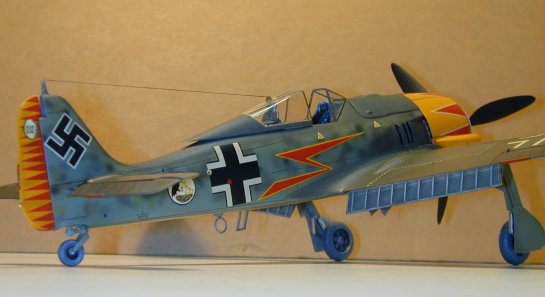
The last item added to complete the kit was the antenna made from stretched sprue.
Hermann Graf's Fw 190A-5 "Special" was arguably one of the most colorful aircraft flown by the Luftwaffe Aces. The extensive modifications made to the Hasegawa kit were time consuming but I am sure you would agree that the end results are superb!
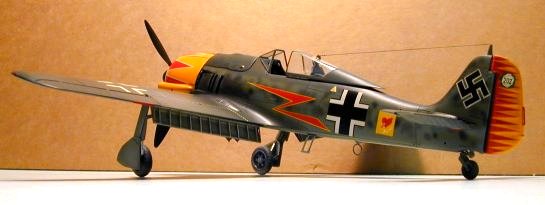
© Ken Matras and Mark Proulx
This article was published on Wednesday, July 20 2011; Last modified on Saturday, May 14 2016
